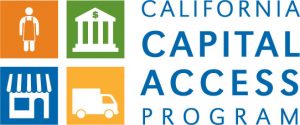California Air Resources Board (CARB) Independent Contributor for the Heavy-Duty Vehicle Air Quality Loan Program
The California Capital Access Program (CalCAP) encourages banks and other financial institutions to make loans to small businesses. CalCAP is administered by the California Pollution Control Financing Authority.
CalCAP is a loan loss reserve program which may provide up to 100% coverage on certain loan defaults. By participating in CalCAP, lenders have available to them a proven credit enhancement to meet the financing needs of California’s small businesses.

Eligible Uses of Loan Proceeds
CalCAP supports loans made to small businesses to assist them in growing or maintaining their businesses. Loans in the Heavy-Duty Vehicle Air Quality Loan Program can be used to finance heavy-duty trucks (over 14,000 gross vehicle weight rating (GVWR)) equipped with engines certified to specified engine emission standards for 2010 and newer model year engines. The engines can use diesel fuel, compressed natural gas (CNG), liquefied natural gas (LNG) or other fuels, including zero emission technology. In addition, Equipment Warranty is eligible for enrollment when funded with the purchase of an eligible tractor.
Terms
The maximum loan amount is $5 million (maximum of $2.5 million enrolled over a 3 year period), and can be enrolled for up to five years. The maximum interest rate a lender may charge on any single loan is 20% annual percentage rate (APR). Lenders set the terms and conditions of the loans and decide which loans to enroll into the CalCAP/CARB Program. CalCAP, in conjunction with CARB, the Independent Contributor, contributes up to 14% of the principal balance enrolled to a loss reserve account.
Loans or Terminal Rental Adjustment Clause (TRAC) leases can be short or long-term, have fixed or variable rates, be secured or unsecured, and bear any type of amortization schedule.
Lenders newly enrolled in the program and existing lenders that have not yet reached $500,000 in total contributions under the program will receive a contribution rate of 14%. After a lender receives $500,000 or more in contributions, the contribution rate will be reduced to 10% of the enrolled amount.
Eligible Lenders
Any federal or state-chartered bank, savings association, certified Community Development Financial Institutions (CDFI), or credit union is eligible to participate in CalCAP. A lender must certify that it is in good standing with its regulatory body (Federal Reserve, Federal Deposit Insurance Corporation (FDIC), Comptroller of Currency, Thrift Supervision, National Credit Union Administration (NCUA), or state banking authority). Finance Lenders and others may also be eligible.
How the Program Works
Business applies to a Participating Financial Institution for a loan or TRAC lease.
Applies to the California Pollution Control Financing Authority (CPCFA) to participate in CalCAP.
Enrolls each loan with CalCAP.
CPCFA administers CARB’s Air Quality Improvement Plan (AQIP) funds dedicated to the Heavy-Duty Vehicle Air Quality Loan Program.
At the time of loan enrollment approval, CPCFA pays a contribution into the lender’s loan loss reserve account. The contribution is 14% of the enrolled loan amount until the lender has received $500,000 in total contributions. Thereafter, the contribution is reduced to 10% on $500,000 or more in total contributions. Loan enrollment applications must be received by CPCFA within 15 business days of the “Date of First Disbursement” (Date of Loan).
At the time of loss, CPCFA approves claims submitted by the lender up to the amount in the lender’s loss reserve account.
When a lender’s first loan is enrolled, CPCFA establishes a loss reserve account for that lender. Each time a subsequent loan is enrolled, CPCFA contributes to the loss reserve account.
The more loans a lender makes and enrolls, the more dollars are deposited into the lender’s loss reserve account.
How the Loss Reserve Account Grows
Over time, as more and more loans are enrolled, a lender’s loss reserve account grows. For example, if a new lender makes 10 loans totaling $500,000.00, the lender will have $70,000.00 in its loss reserve account. If one loan of $50,000.00 charges off, the lender has coverage of 100% of the loss. The lender must return any subsequent recoveries from the borrower, less expenses, to the loss reserve account.
Eligible Small Businesses
- The borrower’s fleet size must be 0-10 on-road heavy-duty vehicles at the time of loan.
- The borrower’s business activity has its primary economic effect in California (vehicle must be registered in California with the Department of Motor Vehicles).
- The small business must be classified as a small business under U.S. Small Business Administration guidelines (Title 13 of the Code of Federal Regulations) and have 100 employees or fewer.
- The business annual revenue must be $10 million or less, averaged over a three year period.

